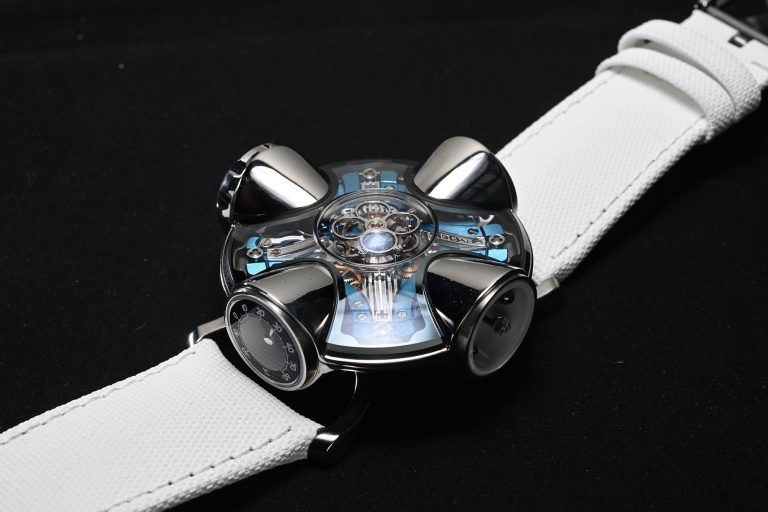When I first got into watches and watchmaking, my mother used to tell me “you can’t be living inside a watch!”, implying with all of her maternal instinct that I shouldn’t be spending my money on watches, and instead, saving for a house.
Little did she know however, that about a decade later, MB&F would unveil the HM11 Architect, a piece that has truly blurred the lines between watch and home. She’s still proven to be correct – I can’t live inside this watch, but it is the closest that we will ever get to a watch that has been truly designed in an architectural manner.
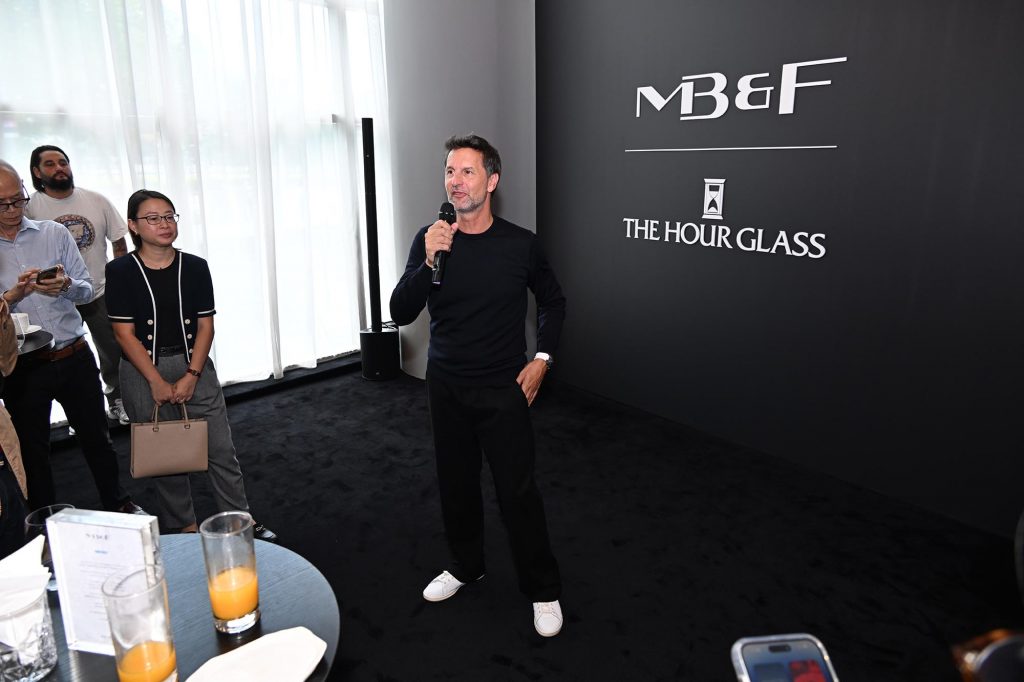
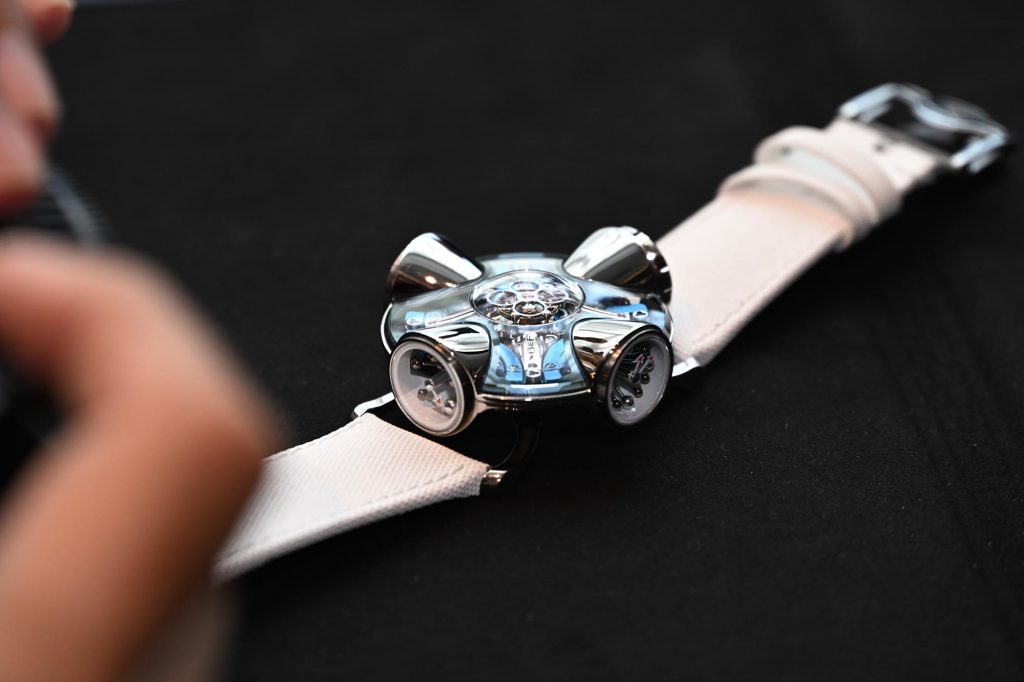
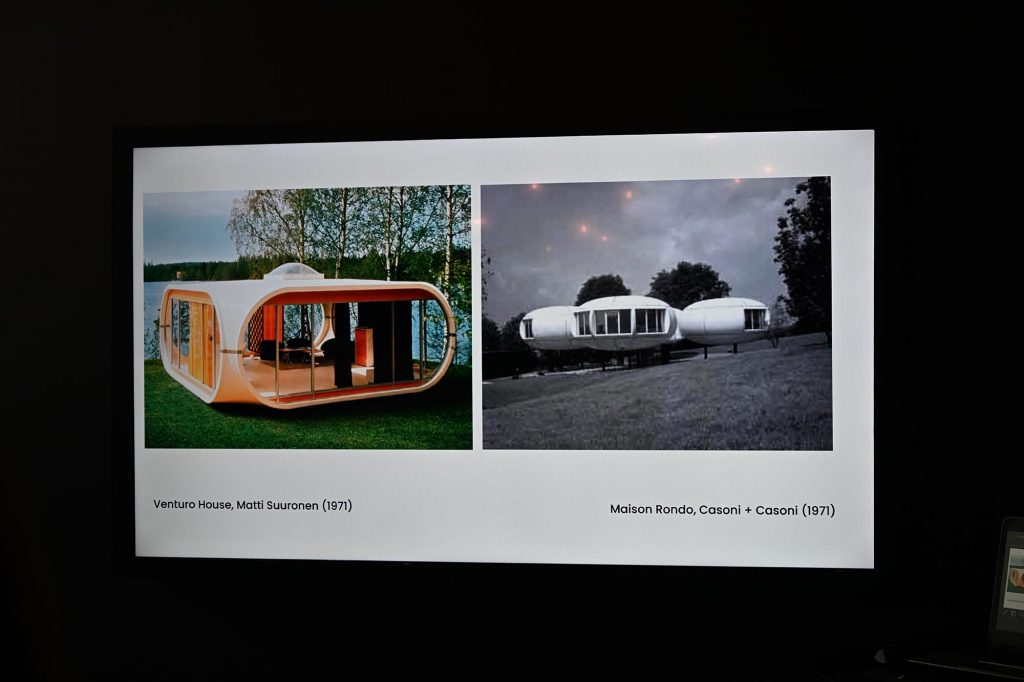
From jellyfish, to vintage cars, battle axes and bulldogs, Max Busser draws inspiration from all walks of life. As with all Horological Machines, the watches are a representation of Max Busser’s imagination that is firmly set in the 20th Century. Inspired by the architecture of the 1960s with its curvilinear forms, the HM11 features a distinctive movement design that influences the exterior of the watch – with four pods extending out from the centre.

Posing the question of “What if a house was a watch?”, the HM11’s four pods are the ‘rooms’ of the watch, each featuring a distinct display. Three of these pods house the time (hours and minutes), power reserve (which, like the time pod, uses polished aluminium rods and spheres to display information) and an unusual mechanical thermometer that functions through the use of a bimetallic strip.

The fourth pod is the crown, which seals the watch from ingress of dust and water, but due to its size, is made much more functional with a system of 8 gaskets that make it as easy to use as a regular watch, but with a much larger size that fits the “pod” aesthetic of the HM11. Furthermore, the watch uses a total of 19 gaskets to seal the watch, including a three dimensional gasket that follows the distinctive shape of the watch. Even with its curious structure, the watch remains at 42mm in diameter, with its sapphire and titanium construction.
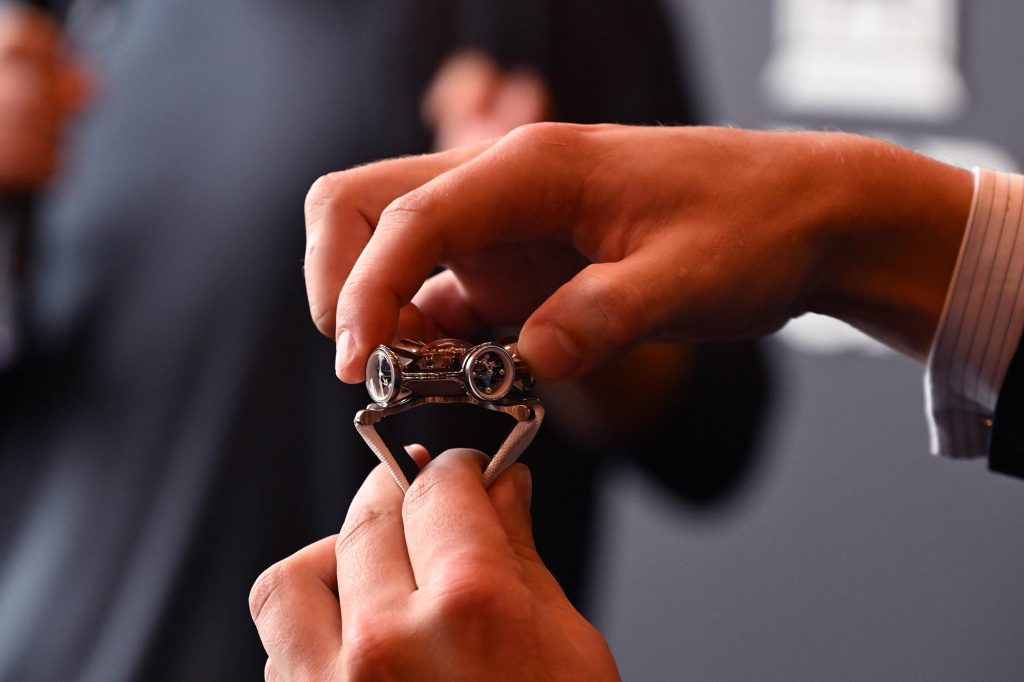
Housed within the watch is a calibre specially designed for the HM11, that contains a central flying tourbillon. Curiously, the watch is wound by turning the entirety of the case – this provides more torque to wind the mainspring, with every 45 degree turn winding the watch for 72 minutes at a time, for a total of 96 hours of power reserve. The watch is completely wound after 10 full revolutions of the case.
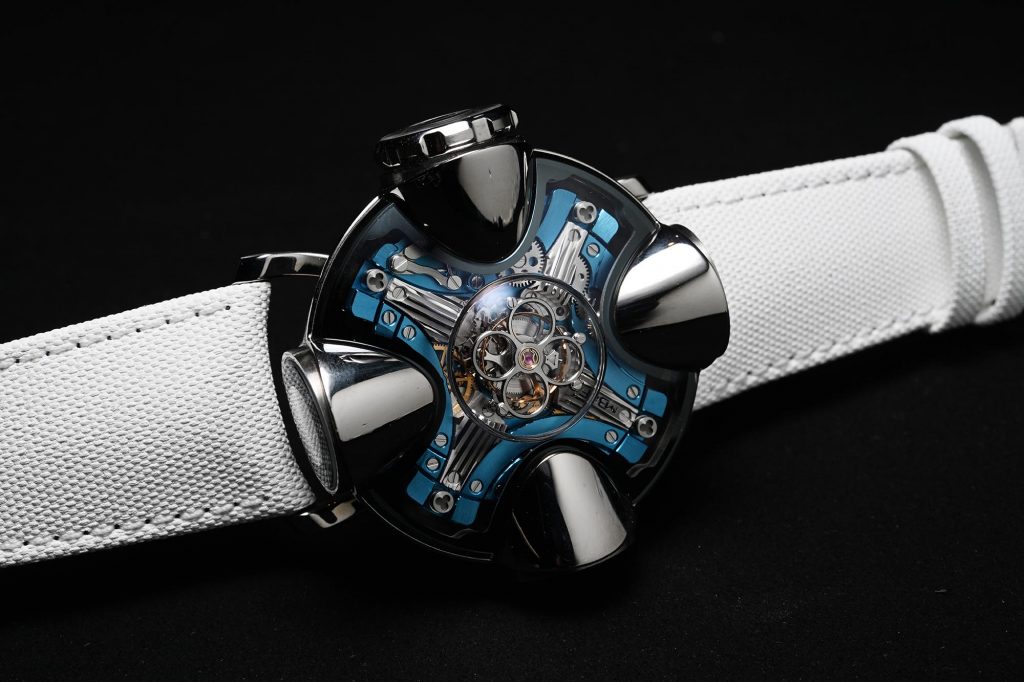
The movement is also suspended by custom springs that sit between the movement and the bottom shell of the case, providing a shock dampener for the movement. These springs are specially alloyed steel with a focus on high hardness, which have their origins in the aerospace industry. As mentioned before, the watch also includes a rare mechanical thermometer that works through a bimetallic strip – the strip expands and contracts with the rise and fall in temperature, and is linked with a rack and pinion system to display the temperature (this is also available in Celsius or Fahrenheit variations).
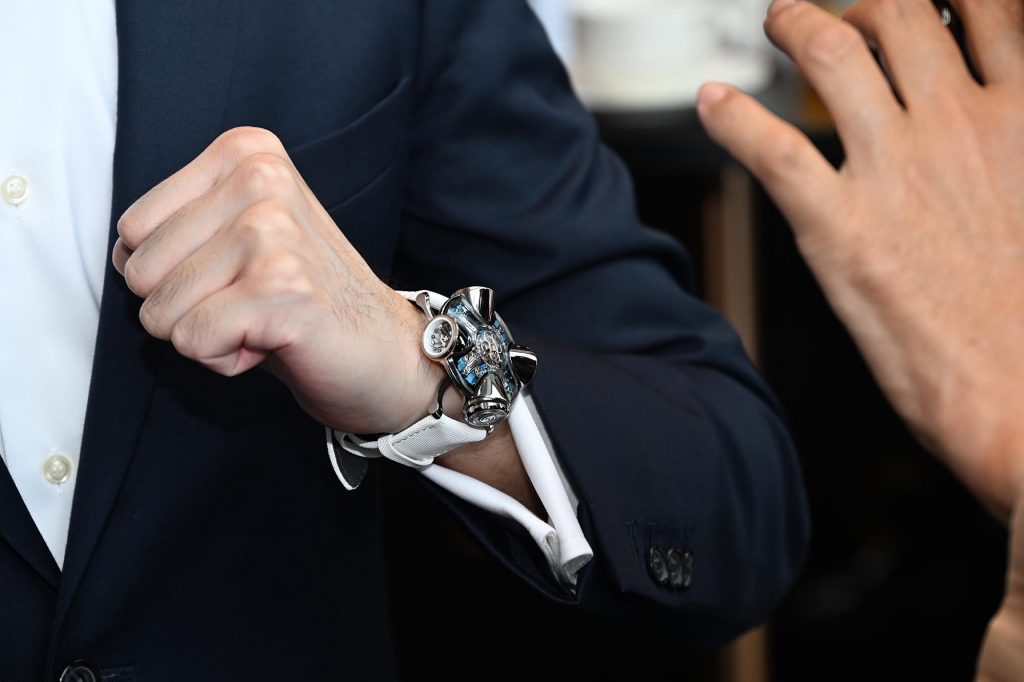
The HM11 continues Max Busser’s work in making watch enthusiasts smile. Whilst the design might be polarising, and indeed, all of MB&F’s work, connoisseurs cannot help but marvel at the process of thought, design and execution that MB&F put into each of their machines. Looking at MB&F’s track record, it is clear then that they truly believe that a creative adult is a child who survived, and the HM11 is the future dream home of that child.


